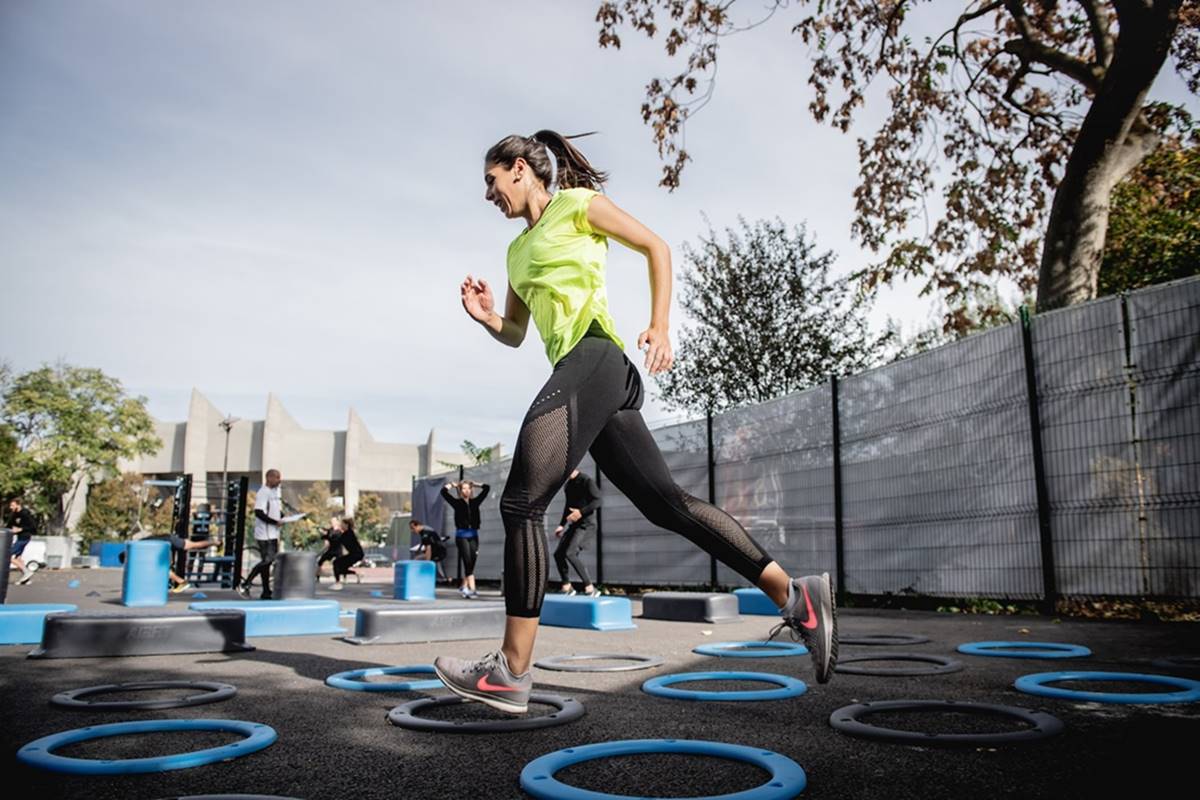

Featured
What Is Tempo Pace In Running
Published: October 5, 2023
Learn all about tempo pace in running, including how to calculate and train at this optimal speed. Discover the benefits of incorporating tempo runs into your training routine. Featured content.
Introduction
Welcome to the world of running! Whether you’re a seasoned marathoner or a beginner looking to take up running as a form of exercise, understanding various training techniques is crucial for improving your performance. One such technique is tempo pace training.
Tempo pace training is a widely recognized method used by runners to build speed and endurance. It involves running at a sustained, challenging pace for a prolonged period of time. By incorporating tempo pace runs into your training routine, you can effectively improve your race times and overall performance.
In this article, we will explore the definition of tempo pace and its benefits, as well as provide tips on how to determine your tempo pace and incorporate it into your training. We will also discuss potential risks and considerations associated with tempo pace training.
So, whether your goal is to break a personal record or simply enhance your fitness level, read on to discover the power of tempo pace in running.
Definition of Tempo Pace
Tempo pace, also known as threshold pace, is the pace at which you can comfortably sustain a conversation but still feel a moderate level of exertion. It lies between your easy, conversational pace and your all-out, sprinting pace.
When running at tempo pace, your breathing becomes deeper and more rhythmic, and your muscles begin to work harder. It is important to maintain good form and stay relaxed while running at this pace to maximize the benefits.
Tempo pace is typically expressed as a percentage of your maximum pace. The general guideline for tempo pace is to run at a pace that is around 80-90% of your maximum effort. However, this can vary depending on your fitness level and training goals.
Tempo runs are usually performed as continuous runs or as intervals with short breaks in between. The duration of a tempo run can range from 20 minutes to an hour, with the intensity and distance depending on your fitness level and training goals.
It’s worth noting that tempo pace is not a one-size-fits-all concept. It is different for every individual and can vary based on factors such as age, fitness level, and running experience. Thus, it is crucial to determine your own unique tempo pace to effectively incorporate it into your training.
So, now that we understand what tempo pace is, let’s delve into the numerous benefits it offers for runners of all levels and abilities.
Benefits of Tempo Pace Training
Tempo pace training offers a wide range of benefits for runners looking to improve their performance and reach their fitness goals. Let’s explore some of the key advantages:
- Improved lactate threshold: Tempo pace runs help increase your lactate threshold, which is the point at which lactate begins to accumulate in your muscles faster than your body can remove it. By regularly training at tempo pace, you gradually raise this threshold, allowing you to run faster for longer periods without experiencing fatigue.
- Enhanced endurance: Tempo pace training challenges your cardiovascular system, helping to improve your overall endurance. By running at a sustained, moderately fast pace, your heart and lungs adapt, becoming more efficient at pumping oxygen to your muscles. This increased endurance translates into improved performance in longer distance races.
- Increased speed: Tempo pace runs also contribute to a faster pace by improving your body’s ability to maintain a faster tempo over time. By consistently training at a moderately challenging pace, your muscles become more efficient at utilizing oxygen, allowing you to sustain a quicker speed over longer distances.
- Boosted mental resilience: Running at tempo pace requires mental focus and discipline. It helps develop your mental resilience by teaching you to push through discomfort and maintain a strong pace. This mental strength gained from tempo pace training can translate into other aspects of your life, making you more resilient and determined.
- Variety in training: Tempo pace runs provide a change of pace from your easy runs and interval workouts. They add variety to your training routine, keeping you motivated and engaged. Tempo runs also help break the monotony of long, slow runs, making your training more enjoyable.
By incorporating tempo pace training into your running routine, you can reap these benefits and take your running to the next level. In the next section, we will discuss how to determine your tempo pace.
How to Determine Your Tempo Pace
Determining your tempo pace is essential to ensure that you are training at the appropriate intensity level. Here are a few methods to help you establish your tempo pace:
- Time Trial: The most accurate way to determine your tempo pace is to do a time trial. Find a flat course or a track and run at a challenging pace for 30 minutes. Record the distance covered and use it to calculate your average pace. This will give you a good starting point for your tempo pace.
- Perceived Exertion: Another way to estimate your tempo pace is by using the Rate of Perceived Exertion (RPE) scale. During a run, notice how hard you are working on a scale of 1 to 10, with 1 being very easy and 10 being maximum effort. Your tempo pace should feel like a 7 or 8 on the RPE scale.
- Race Results: If you have recently completed a race, you can use your race time to estimate your tempo pace. Take your finishing time and calculate your average pace. Adjust this pace slightly to match the sustained effort of a tempo run.
- Heart Rate: Monitoring your heart rate during a run can also help determine your tempo pace. Run at a comfortably challenging pace and note your heart rate. Tempo pace is typically around 80-90% of your maximum heart rate. Use a heart rate monitor to track your exertion level.
- GPS Watch or Running App: Some GPS watches or running apps have built-in features that can estimate your tempo pace based on your recent training data and performance. Utilize these tools to get a rough estimate of your tempo pace.
Remember, tempo pace is individual, and it may take a few attempts to find the right intensity for your workouts. Trust your body’s feedback and adjust your pace accordingly.
By accurately determining your tempo pace, you can optimize your training sessions and maximize the benefits of tempo pace training. In the next section, we will provide some valuable tips for incorporating tempo pace training into your running routine.
Tips for Incorporating Tempo Pace Training into Your Routine
Now that you’re familiar with tempo pace and how to determine it, let’s discuss some valuable tips for effectively incorporating tempo pace training into your running routine:
- Warm-up: Prior to starting your tempo run, it’s crucial to warm up properly. Begin with a light jog or dynamic stretches to prepare your muscles and gradually increase your heart rate.
- Choose the right day: Schedule your tempo pace run on a day when you’re feeling fresh and well-rested. Avoid immediately following a hard workout or on a day when you’re fatigued.
- Start with shorter distances: If you’re new to tempo pace training, start with shorter distances and gradually increase the duration as your fitness improves. Begin with 10-15 minutes and gradually work your way up to longer sessions.
- Maintain consistent effort: During your tempo run, focus on maintaining a steady effort level rather than fixating on your pace. This will help you sustain a challenging intensity throughout the run.
- Monitor your form: Pay attention to your running form while training at tempo pace. Keep your posture upright, relax your shoulders, and maintain a smooth and efficient stride.
- Use proper breathing techniques: Practice rhythmic breathing patterns, such as inhaling for two steps and exhaling for two steps, to help oxygenate your muscles and maintain a steady breathing rhythm.
- Recover properly: After completing a tempo run, allow your body to recover. Incorporate rest days and easy runs into your training program to prevent overtraining and reduce the risk of injury.
- Progress gradually: Gradually increase the duration or intensity of your tempo pace runs over time. This progressive approach will help prevent injuries and allow your body to adapt to the demands of the training.
- Listen to your body: Pay attention to any signs of overexertion or excessive fatigue during tempo pace training. If you’re feeling overly exhausted or experiencing pain, take a break and allow your body to recover.
By following these tips, you can effectively incorporate tempo pace training into your routine and experience the numerous benefits it offers for your running performance.
While tempo pace training is beneficial, it’s important to be aware of potential risks and considerations. We will discuss these in the next section.
Potential Risks and Considerations
While tempo pace training can be highly beneficial for improving your running performance, it’s essential to be aware of potential risks and considerations. Here are some factors to keep in mind:
- Overtraining: Pushing yourself too hard or incorporating too many tempo pace runs into your training without adequate recovery can increase the risk of overtraining. Make sure to include rest days and easy runs in your training program to allow your body to recover and adapt.
- Injury Risk: Running at a faster pace puts additional stress on your muscles, tendons, and joints. It’s crucial to listen to your body and watch out for any signs of injury, such as persistent pain or discomfort. If you experience any issues, consult a healthcare professional or a running coach.
- Individual Differences: Everyone’s body is unique, and what works for one person may not work for another. It’s important to experiment and find the right tempo pace that suits your fitness level, goals, and personal capabilities.
- Gradual Progression: It’s important to gradually increase the duration or intensity of your tempo pace runs. Rushing into longer or faster tempo sessions without proper progression can increase the risk of injury or burnout.
- Health Considerations: If you have any pre-existing health conditions or concerns, it’s crucial to consult a healthcare professional before incorporating tempo pace training into your routine. They can provide personalized recommendations and ensure it aligns with your specific needs.
- Weather and Environmental Factors: Take into account factors such as temperature, humidity, and terrain when performing tempo pace runs. Adjust your pace and expectations accordingly to ensure a safe and enjoyable training experience.
By being mindful of these potential risks and considerations, you can minimize the likelihood of injuries and make the most out of your tempo pace training.
Now that we have explored the various aspects of tempo pace training, let’s wrap up by summarizing the key points discussed.
Conclusion
Tempo pace training is a powerful tool that can significantly enhance your running performance and help you achieve your fitness goals. By incorporating tempo runs into your training routine, you can improve your lactate threshold, endurance, speed, mental resilience, and add variety to your workouts.
When determining your tempo pace, consider using methods such as time trials, perceived exertion, race results, heart rate monitoring, or utilizing GPS watches or running apps. These methods will help you gauge the appropriate intensity level for your tempo runs.
To effectively incorporate tempo pace training into your routine, warm up before your run, choose the right day, start with shorter distances, maintain consistent effort, monitor your form and breathing, recover properly, progress gradually, and listen to your body.
However, it’s important to be mindful of potential risks and considerations such as overtraining, injury risks, individual differences, gradual progression, health considerations, and environmental factors. By being aware of these aspects, you can safely and effectively incorporate tempo pace training into your running routine.
Remember, tempo pace training is just one piece of the puzzle. It should be combined with other training methods such as easy runs, interval workouts, strength training, and proper nutrition to achieve optimal results.
So, lace up your running shoes, embrace the power of tempo pace, and take your running to new heights. Whether you’re aiming for a personal best or simply looking to enjoy the benefits of improved fitness, tempo pace training can help you reach your goals.









